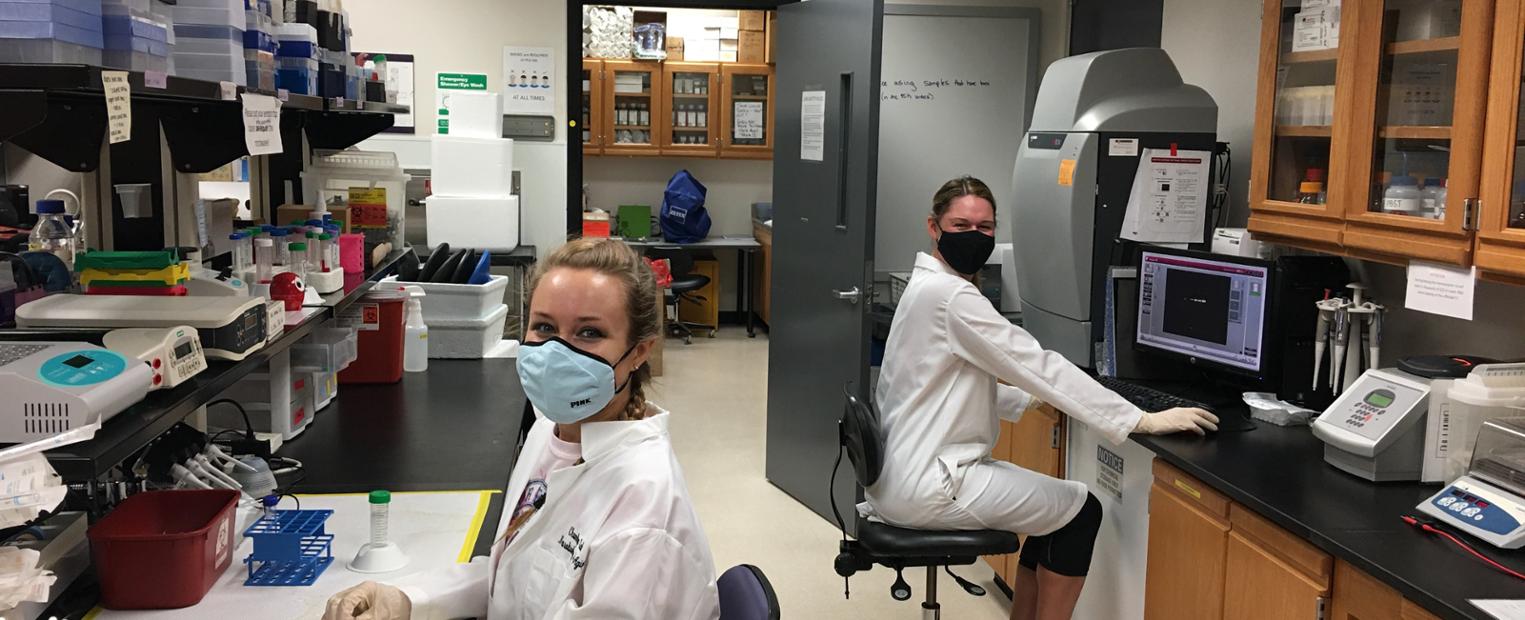Technology has never been more important than it is today as the COVID-19 pandemic continues to impact our daily lives and plans. Virtual meetings, study sessions, office hours, and education have become commonplace activities, and Zoom is now one of many familiar programs as we adapt into uncharted times in the world. Early this summer, CSE faculty began intensive training to learn how to adapt their courses into online formats as part of the TCU Connected Campus plan for the fall semester. With additional time, resources and training, faculty feel more equipped than ever to deliver a personalized academic experience.
From mathematics, engineering and environmental sciences to ranch management and geology – the College of Science & Engineering provides a significant variety of science courses to TCU students. Each discipline requires a unique approach to teach through online or hybrid environments. This summer, biology Instructor Sophia Garcia used real-time Zoom sessions to provide instruction and facilitate class discussion while incorporating Anatomy & Physiology Revealed (APR), a virtual human cadaver, to teach about anatomy.
One of Garcia's students, Nursing Pre-Major Mckenzie Mock, said, “The APR program has been great as a replacement during at-home learning. My grandpa, who was a plastic surgeon, always asks me to go on it when he visits because he thinks it’s great, and he is always testing me on the topic I’m currently studying.”
In math, Associate Professor Rhonda Hatcher uses tools such as the Apple pencil to sketch statistics problems on a virtual whiteboard for her students.
Larger courses of more than 190 students, such as Contemporary Environmental issues, taught by Professor Michael Slattery, were well received during the peak of the online transition in April. “I made an unexpected set of connections with this class. I got to learn many more names than in my previous in-person classes through our Zoom study sessions, which would sometimes go as long as two hours,” he said. “They started feeling more comfortable asking questions and getting into one-on-one discussions on live Zoom rather than feeling shy to ask those probing questions in class, which really surprised me.”
Courses such as anatomy and physiology utilized a combination of videos, daily quizzes and lecture to keep students engaged throughout the course. “For me, teaching online was a surprisingly good experience. I think my students have even better access to me via Zoom, email, text or phone because I am available to answer almost anytime. Additionally, I feel that all the training I took in order to teach courses online has made me a better instructor overall, and I plan on keeping some of these changes in my class even when we are meeting face-to-face again,” said Stephanie Wallace, instructor II of biology.
“For my class, Contemporary Issues in Biology, it went really well. It was a smooth transition because a lot of the work we were already doing in class – we were able to do in the same way,” said Senior Instructor Michael Sawey. “The preparation the students did for class was the same, but class lecture was virtual. Our lab sections were already online-based before COVID-19, so with the transition it didn’t require a tremendous shift. This class worked really well online, and being able to embrace new technologies we have, – I feel the students actually got a better experience. Overall the student feedback at the end of the class was the best it has ever been.”
This summer, graduate students and faculty also returned to research activities with a series of new safety protocols. Graduate students in Professor Michael Chumley’s Neurobiology of Aging Lab are following strict cleaning protocols, which involves daily cleaning of all instrumentation and surfaces. Cleaning is tracked through a log sheet, and only three people are allowed in the lab space at a time to maintain social distancing.
While a variety of plans are in place to keep students safe in the fall, faculty are focused on delivering a high quality academic experience, and overall students have been understanding and receptive to the new modalities of teaching.
